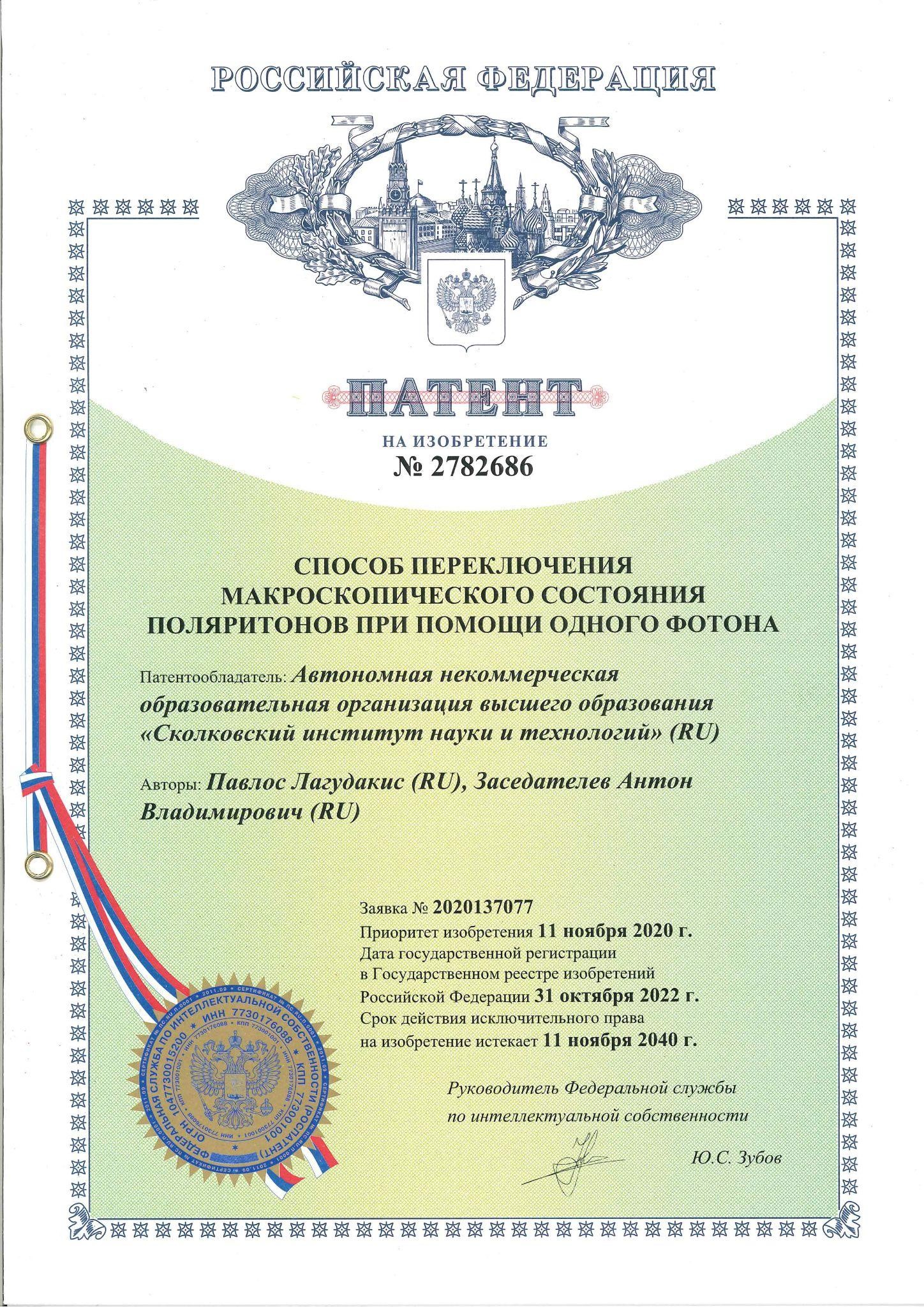Skoltech researchers have patented a way to switch a peculiar macroscopic state of light known as polariton Bose-Einstein condensate at room temperature using nothing but a single photon. One day polariton condensate could be used to store and manipulate data in optical computing, so being able to switch its state efficiently takes us one step closer to computers that would operate on photons rather than electrons, achieving vastly superior performance and requiring a fraction of the power consumed by today’s electronics. The patent was granted by the Russian Federal Agency for Intellectual Property. The associated study came out earlier in Nature.
“Figuratively speaking, what we did is that we showed we can switch light on and off at ambient conditions by hitting the optical switch with one tiny particle, a photon, which is as energy-efficient as it gets. We did not use an actual light bulb, of course, experimenting instead with a complex entity known as polariton condensate, but that too is a macroscopic — or large-scale — state of light, which could be used to encode zeros and ones in ultrafast and energy-saving computers of the future,” patent co-holder, Professor Pavlos Lagoudakis of Skoltech Photonics, commented.
Being able to efficiently manipulate the state of light is essential for using it in optical computers, in which light would be used to replace electrical current. Since light travels faster than electrons and generates less heat, this would mean much faster computations and unparalleled energy-efficiency, with no energy lost to heating and no cooling system required.
“The problem is that running optical computations means having two light signals interact with each other, but the laws of physics are such that light hardly ever interacts with other light: You can shine a flashlight perpendicular to the beam of another flashlight, and the two do not affect each other in any way. Much of photonics is actually about coaxing a light wave into affecting the state of another light wave,” Lagoudakis explained.
The currently used approaches to modulating light waves are so inefficient that the amount of power needed to modify a signal via acoustic waves, electricity, or other light is comparable to the power of the original signal itself. Clearly, it would be way more practical if that original signal could be modified, or switched, via another, very faint signal — the weaker, the better — the way it happens with electronic transistors in modern computers.
The ultimate energy-efficiency limit is single-photon switching, which relies on just one particle of light to change the state of the light wave that constitutes the original signal. Skoltech researchers have patented a way to do just that after accomplishing this feat in an actual experiment with so-called polariton condensates, a state of matter that could be colloquially described as liquid light.
The setup involves two lasers with meticulously fine-tuned characteristics. The first laser shines on a material that generates a droplet of liquid light. This produces a number of polaritons that are in sync with each other — a polariton condensate in a state we might assign to zero. The second laser then delivers exactly one photon to the system, switching its state from zero to one by increasing the number of synchronized polaritons in the condensate.
“This study goes back to the room-temperature polariton transistor our team presented in 2019. Since then we’ve gone from switching the state of that device between zero and one with a signal which was roughly 10,000 to 100,000 photons strong to single-photon switching in our recent experiment,” Lagoudakis said. “Notably, we’re still operating at ambient conditions, while the ‘warmest’ that competing approaches based on ultracold atoms, solid-state qubits, or quantum dots have come was below -263 degrees Celsius. Moreover, the alternative approaches tend to require vacuum and/or immensely strong magnetic fields.”
To make the leap to single-photon switching, the team undertook a major upgrade of the experimental setup. Originally, the state of the system was detected by averaging a thousand realizations of the polariton condensate, each generated by a distinct laser pulse. It was only after the signal had been accumulated over a thousand iterations that it was analyzed.
“Now that we have increased detection sensitivity, we can generate and analyze a distinct single realization of the polariton condensate,” Lagoudakis explained. “Besides, we have achieved much greater control over condensate preparation, so we can carry out the analysis on condensates prepared under exactly the same conditions, exciting completely identical condensate states. In other words, we managed to detect the extremely subtle act of single-photon switching in this latest experiment by simultaneously stepping up sensitivity and eliminating noise.”
The research underlying the patented invention reported in this story was supported by the Russian Science Foundation under Project No. 20-72-10145 titled “Organic Polaritonics: Investigation of Nonlinear Interactions and Quantum Effects of Bose Condensates of Frenkel Exciton Polaritons.”
Contact information:
Skoltech Communications
+7 (495) 280 14 81

